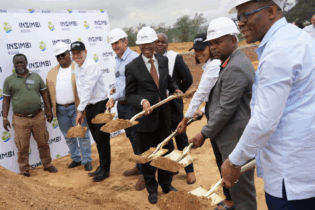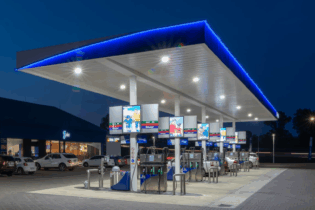A large investment programme worth $4,3bn is being undertaken by the Djibouti Ports and Free Zones Authority (DPFA) to expand its operations and support the growing economy of its larger landlocked neighbour and main customer, Ethiopia. The plan is to add five ports to a sprawling complex incorporating a new free trade zone, the authority’s chairman, Aboubaker Omar Hadi, said in an interview last week.
The investment is in line with a push by heads of state on the continent — along with the African Development Bank (AfDB) — to accelerate infrastructure development, and will be rolled out over three years. Djibouti has been identified as important emerging trans-shipment hub in Africa, whose other hubs include Durban and Dar es Salaam. Mr Hadi believes the DPFA has stolen a march on SA’s Port of Ngqura, as the Djibouti port has been built to accommodate large vessels with a draught of up to 18m. Ngqura was dredged to a depth of 16,5m. “We have the deepest container terminal (in Africa). We took a decision to go deeper (than Ngqura) because there was a chance the ships are going to keep getting bigger. We feel confident we made the right decision,” Mr Hadi says. Higher oil prices and the years of strong economic growth pushed shipping companies to seek economies of scale by building larger ships. While larger ships may be efficient in some respects they require deep berths for offloading their cargo. Making multiple stops in the waters off small, shallow ports is expensive and time-consuming. While Ngqura and Djibouti are thousands of nautical miles apart, both ports offer fast turnaround times for ships carrying containers for transshipment. That will attract more traffic and make more money. In February the continent’s leaders launched the Programme for Infrastructure Development in Africa (Pida ) at an African Union meeting in Addis Ababa. The Pida is a multibillion dollar plan for investment that will run until 2040, and according to AfDB, would double Africa’s share of global trade to 4% and achieve the same for intra-Africa trade. The AfDB estimated in 2010 that closing Africa’s infrastructure deficit would require spending $93bn a year until 2020. Djibouti is at the mouth of the Red Sea and the Gulf of Aden, and is linked to Ethiopia’s capital Addis Ababa by rail. Almost 90% of Ethiopia’s exports and imports pass through Djibouti. Djibouti has three ports: one for oil, a container terminal and a multipurpose port. The free trade zone is a fourth element. “We are going to expand all three as we reach capacity in the next three years, we need to start early so that we do not have constraints,” Mr Hadi says. “Our free trade area is also full; we have 145 companies from 36 countries operating out of there.”A second phase for the free trade area is being developed to accommodate light industry such as agro-processing.
The DPFA will take the risk of investing in infrastructure such as warehousing and bulk services on behalf of potential tenants in order to secure their business, Mr Hadi says. Half the new 57ha free trade zone has already been allocated to companies that are either expanding in Djibouti or relocating there. They include business from India, China and the US, Mr Hadi says. The development of the new free trade zone will be completed by December. Five new ports are either under construction or in the advanced planning stage. “We have about 75% of the funding already; it is a mixture of money from DPFA and from sources such as the AfDB, the Arab Fund and China Eximbank.” South African engineering and construction companies are well positioned to take part in the project, Djibouti-based business advisory services Greenwich Group CEO Dawit Gebre-ab says. “They understand the continent and the infrastructure environment. I think South African companies can take part in this programme,” he says. The five new ports will be purpose-built to allow Ethiopia to export livestock, crude oil, liquefied natural gas, salt and bulk commodities such as potash. A ship-repair yard is contemplated and a feasibility study has been commissioned to investigate the desirability of building the facility near the small port town of Obock. The estimated cost of the yard is $400m. “Off the coast of Djibouti is one of the busiest maritime routes in the world and we are lacking this sort of infrastructure in the region,” Mr Hadi says. The Doraleh Container Terminal, the first in East Africa, has a capacity of 1,5-million 20-foot equivalent units (TEUs) according to Mr Hadi. The plan is to more than treble this to 5,7-million TEUs annually. Efficient transshipment services are needed to cut the cost of transport which has been identified by the AfDB as a constraint to growth and development on the continent. The continent has 64 ports but they have low efficiency when measured in crane moves per hour. On average African ports achieve 20m/hr against a global average of 25-30m/hr in modern ports, the AfDB says. Djibouti’s Doraleh container terminal achieves an average of 34m/hr.Source: http://www.businessday.co.za







